Text
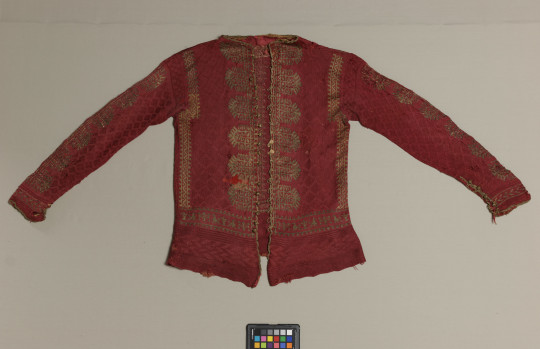
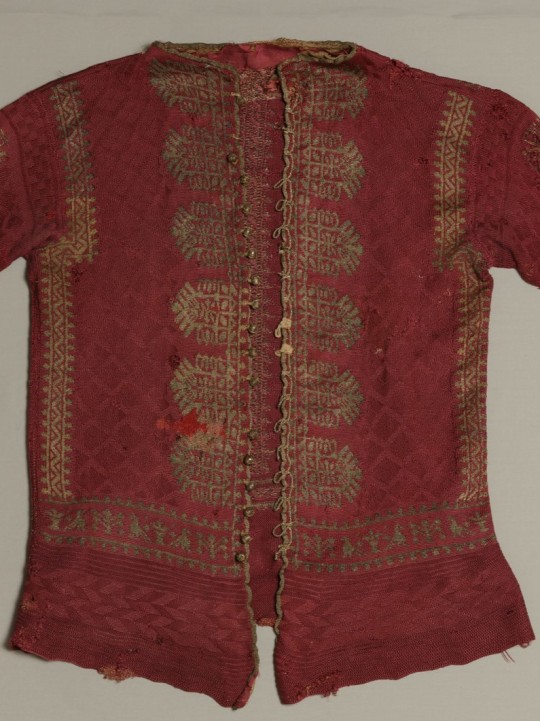
Knitted Jacket
1580s-1610s
Italy
LACMA (Accession Number: AC1995.1.1)
244 notes
·
View notes
Text


Sweater
Late 17th Century
Europe
The rare knitted silks of the seventeenth have never been fully explained, but were probably informal wear. Today they could be purposeful as skiwear or underwear, a light sweater, or a chic bodice. Decorated to be seen, these knits are not represented in painting of the period, yet their role was clearly as a comfortable year-round clothing more consequential than any season's novelty.
The MET (Accession Number: 14.134.18)
295 notes
·
View notes
Text




Knitted Shirt
1650s-1690s
Norway
Nasjonalmuseet (Inventory no.:OK-08800)
362 notes
·
View notes
Text
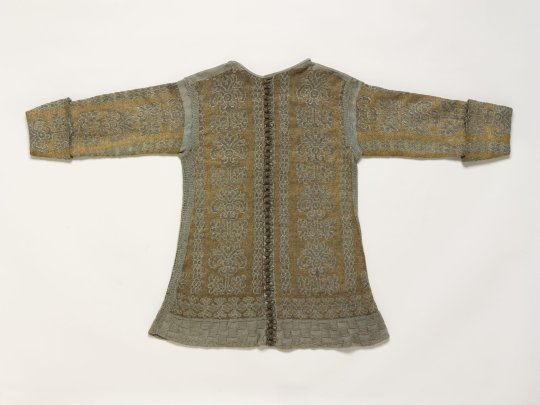
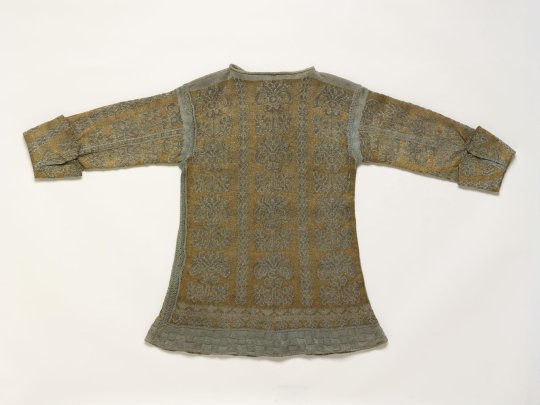
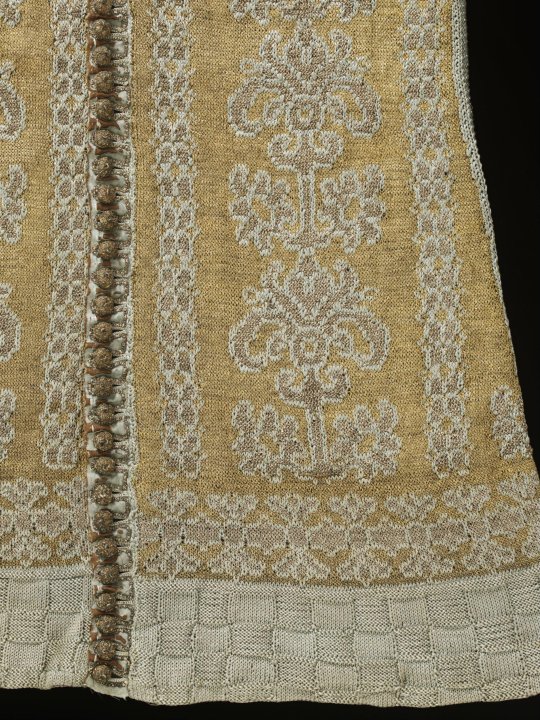
Knitted Jacket
1600s-1690s
Italy
Knitted silk jackets were fashionable in the early 17th century as informal dress. This example is very finely knit by hand in plain silk yarn and silk partially wrapped in silver thread, in contrasting colours of blue and yellow. Characteristic of this style of jacket, it has a border of basket weave stitch and an abstract floral design worked in stocking and reverse stocking stitches. The pattern imitates the designs seen in woven silk textiles. The jacket is finely finished with the sleeves lined in silk and completed with knitted cuffs. Along each centre front, a narrow strip of linen covered in blue silk has been added, with button holes and passementerie buttons, worked in silver thread. The provenance of the jacket indicates that it is probably Italian.
Victoria & Albert Museum (Accession number: 473-1893)
241 notes
·
View notes
Text


Knitted Shirt
1650s-1690s
Norway
Nasjonalmuseet
522 notes
·
View notes
Text
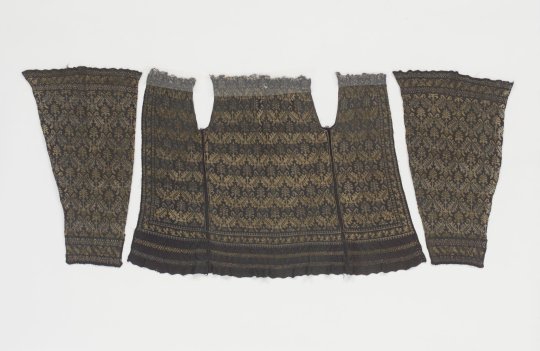

Jacket Panels
1600-1625
Italy or England
Victoria & Albert Museum (Accession number: 346:1 to 3-1898)
145 notes
·
View notes
Text

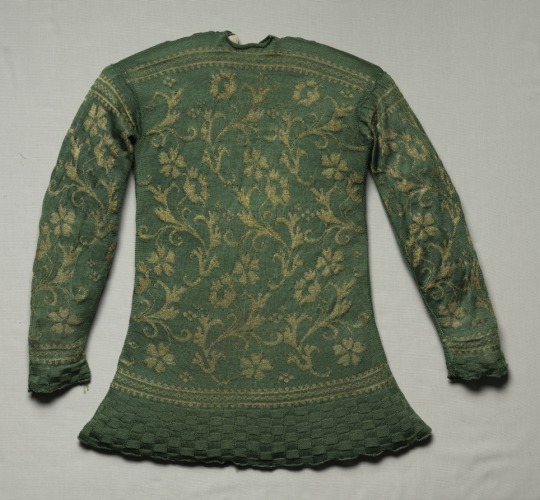

Knitted Jacket
17th Century
Italy
Cleveland Museum of Art (Dudley P. Allen Fund 1931.62)
#clothing#history#knitting#me? collecting references for character designs? It's more likely than you think
180 notes
·
View notes
Text


Knitted Jacket
1630-1650
Italy
Royal Ontario Museum (Object number: 2007.28.1)
165 notes
·
View notes
Text



Knitted Jacket
c.1630-1670
Italy
This waistcoat is a rare example of early 17th century informal dress, which never appears in visual images and with few references in inventories and accounts. References to these garments in wills and wardrobe accounts show that they were worn by both men and women. They seem to have been produced in workshops, knit in ensembles of shaped pieces for the fronts, backs and sleeves.
One of the latest references to them appears in a London paper of 1712 reporting the theft of 'a green silk knit waistcoat with gold and silver flowers all over it, and about fourteen yards of gold and silver lace thick upon it.' Similar jackets have survived in many parts of Europe and it is assumed that they came from one centre of production - Italy seems most likely as silk yarns were most easily obtainable there. It is possible that the knitted pieces were stitched together by the purchaser.
The waistcoat is hand knit with coral pink silk and yellow silk wrapped with silver-gilt thread. It is constructed of five shaped panels, one for the back, one each for the two fronts and the sleeves. The seams are hand-sewn with silk thread and the whole garment is lined with blue linen. A series of regular holes along the front edges of the lining on each front edge suggest that it originally fastened with silk ribbons and metal points.
It was once thought that these waistcoats were produced on the early versions of the knitting frame. However research has shown that the frame was not developed enough in the early 17th century to produce purl stitches or such a fine gauge.
Each panel of knitting bears a pattern of stylised scrolling floral motifs worked in yellow silk on coral. These may have been inspired by the designs of woven silks. A very similar pattern can be seen on knitted waistcoats in the Royal Ontario Museum, the Cleveland Museum of Art and the Museum der Stadt in Ulm. The design is further delineated by the use of reverse stocking stitch against a ground of stocking stitch. A border of basket stitch (squares of purl and stocking stitch) edges the lower hem and wrists. The knitting is very fine, about 17 stitches per inch.
The Victoria & Albert (Accession number: 807-1904)
169 notes
·
View notes
Text


Nerd and Jock Ep 247 - It's a Nerd heist!
Twitter Instagram Patreon
1K notes
·
View notes
Text
can’t stop thinking about them
#tzatziki is so good#even if the pronunciation isn't necessarily intuitive to English speakers I have no idea how you come up with THAT though
23K notes
·
View notes
Photo
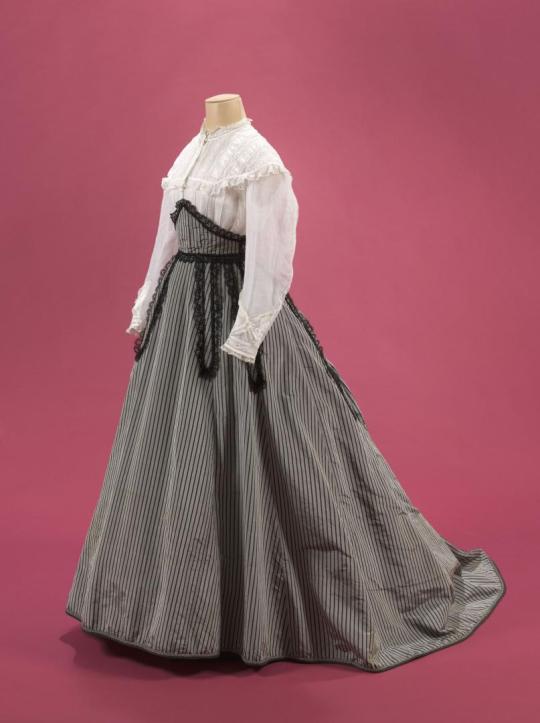
Summer Ensemble with a Swiss Waist
c.1866-1868
Palais Galliera
2K notes
·
View notes
Text
It IS true that being on here gives you a tumblr accent. This morning my mother asked me something and i replied "i don't know i've never heard these words in that order" and she nearly choked laughing. It wasn't even that funny
165K notes
·
View notes
Text
FWIW, "mauve" was one of the coal-tar dyes developed in the mid-19th century that made eye-wateringly bright clothing fashionable for a few decades.
It was an eye-popping magenta purple
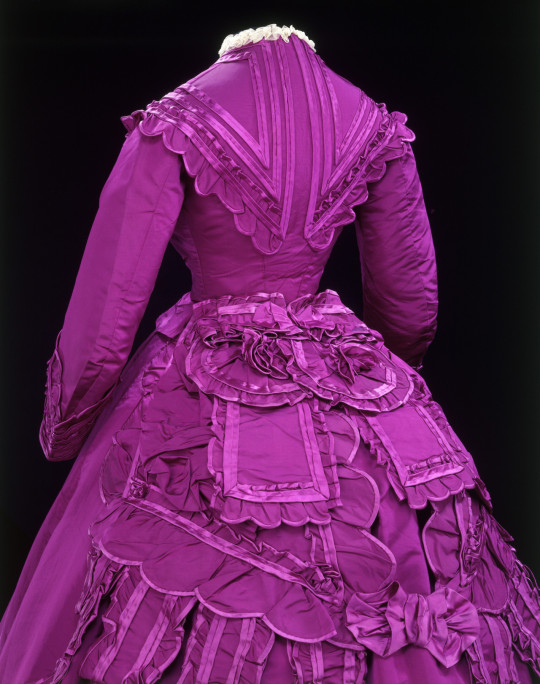
HOWEVER, like most aniline dyes, it faded badly, to a washed-out blue-grey ...
...which was the color ignorant youngsters in the 1920s associated with “mauve”.
(This dress is labeled "mauve" as it is the color the above becomes after fading).

They colored their vision of the past with washed-out pastels that were NOTHING like the eye-popping electric shades the mid-Victorians loved. This 1926 fashion history book by Paul di Giafferi paints a hugely distorted, I would say dishonest picture of the past.
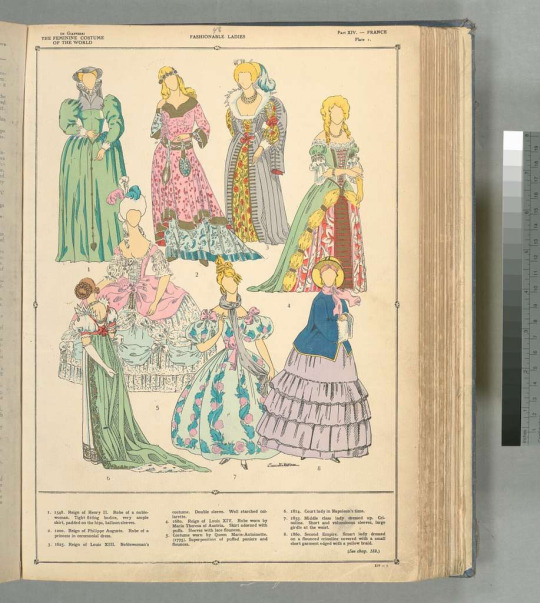
Ever since then this faded bluish lavender and not the original electric eye-watering hot pink-purple is the color associated with the word “mauve”.

18K notes
·
View notes
Text
Caves are weirder and more varied than you think



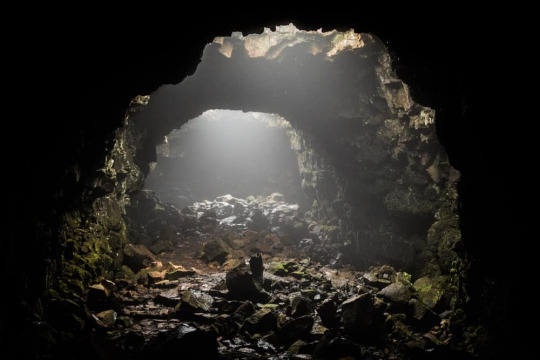
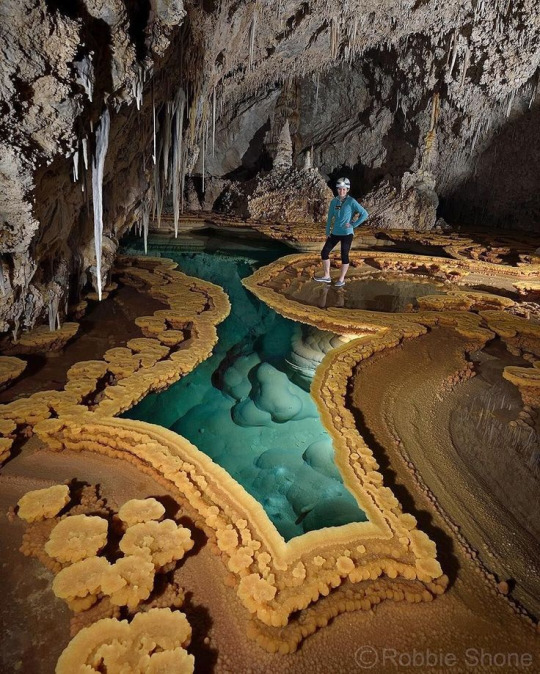

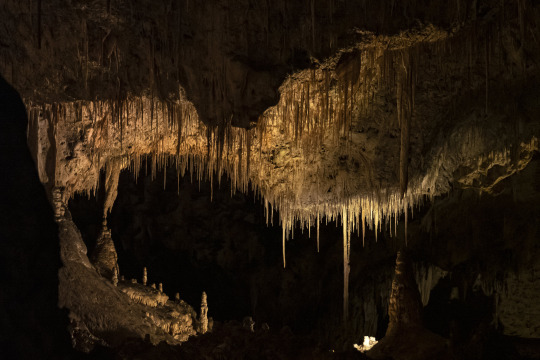
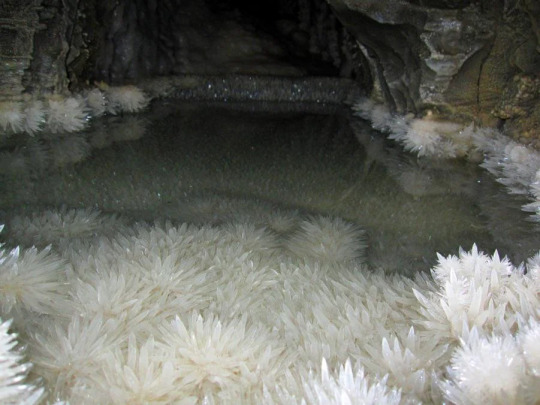


143K notes
·
View notes
Text

Pretty nice handspun yarn you got there; shame something’s gonna happen to it
160 notes
·
View notes
Text
Ugh, was having a great time mocking my recently imprisoned rival when I noticed the camera positioning makes it so that I appear behind the bars, thus framing me as trapped in a metaphorical prison of the narrative, now my whole day is ruined. Fuck.
105K notes
·
View notes